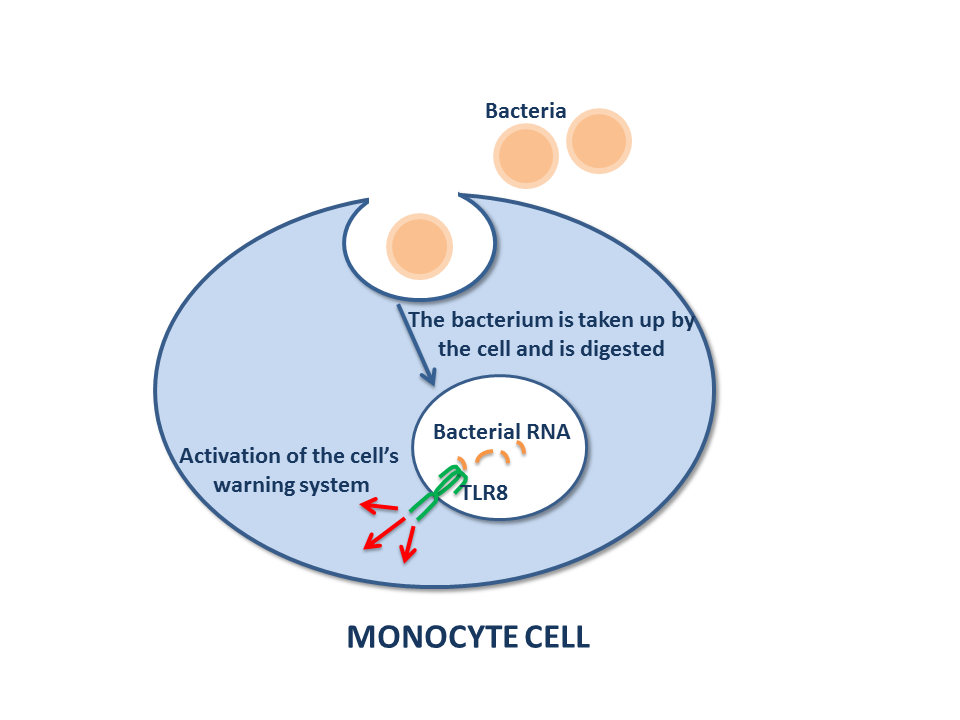Blogger: Birgitta Ehrnstrøm, PhD Candidate, Center for Molecular Inflammation Research (CEMIR)
At the Center for Molecular Inflammation Research (CEMIR) we have discovered a new mechanism for how our immune cells recognize streptococcal bacteria that can cause serious infections in both newborns and adults.
Complicated infections such as blood poisoning are still among the most common causes of people dying in hospitals, despite the fact that we have had access to antibiotics for over 70 years. It is important with increased knowledge about our immune system to develop better treatment and thus survival among those with serious infections.
The immune system’s main task is to protect us against infections. The first step is to recognize and see the difference between what is foreign (the enemy) and what is the body’s own structures. From earlier we know that there are receptors both on the surface and inside the cells that are called Toll-like receptors (TLRs). These constitute the first line of defense in the body.
TLR is one of the most important parts of the immune system that reacts quickly upon encountering parts of bacteria and viruses. When these receptors are activated by foreign organisms, a cascade of warning signals starts activating other parts of the immune system to fight the invader. Earlier it was thought that it is primarily TLRs on the surface of the white blood cells that detect bacteria, while TLRs inside the cell is specialized in detecting viruses.
In our project, we have examined how the immune system reacts to group B streptococci (usually abbreviated GBS). We have investigated what happens when the white blood cells called monocytes come into contact with the GBS.
Monocytes are very important in the immune system and both direct other parts of the defense and digest bacteria that enter the body. We have found that TLR number 8 (TLR8) located within the monocytes is important for detecting GBS. TLR8 recognizes and is activated by fragments DNA-copies from the bacteria that is called RNA.
When RNA from GBS comes into contact with TLR8, the receptor is activated and sends signals that activate the monocyte and other parts of the immune system to fight the streptococcus. TLR8 seems to be particularly important for the detection of streptococci like GBS, but also golden staphylococci. E. coli-bacteria, on the other hand, were not recognized by TLR8.
These findings have recently been published in the Journal of Frontiers of Immunology and are a piece of the puzzle in making a clearer picture of how the body detects invading bacteria.
Reference: Birgitta Ehrnström, Kai Sandvold Beckwith, Mariia Yurchenko, Siv Helen Moen, June Frengen Kojen, Germana Lentini, Giuseppe Teti, Jan Kristian Damås, Terje Espevik, Jørgen Stenvik. Toll-Like Receptor 8 Is a Major Sensor of Group B Streptococcus But Not Escherichia coli in Human Primary Monocytes and Macrophages . Front Immunol. 2017; 8: 1243. Published online 2017 Oct 3.

